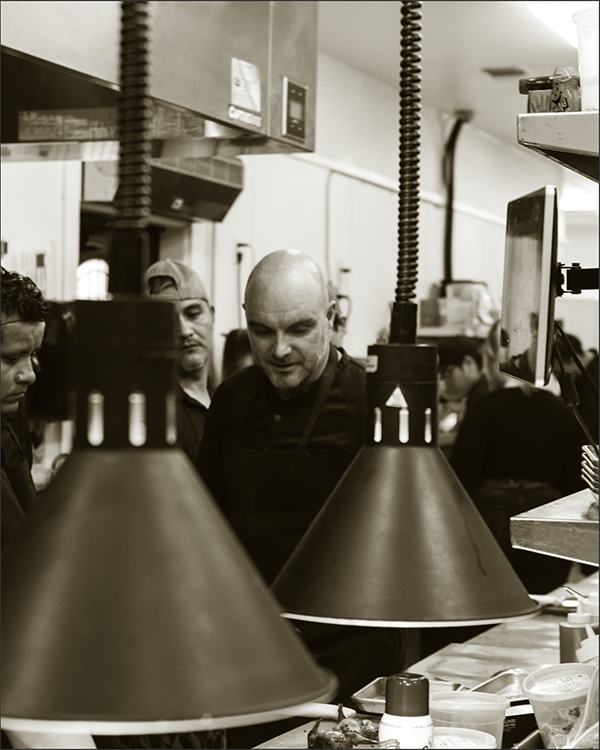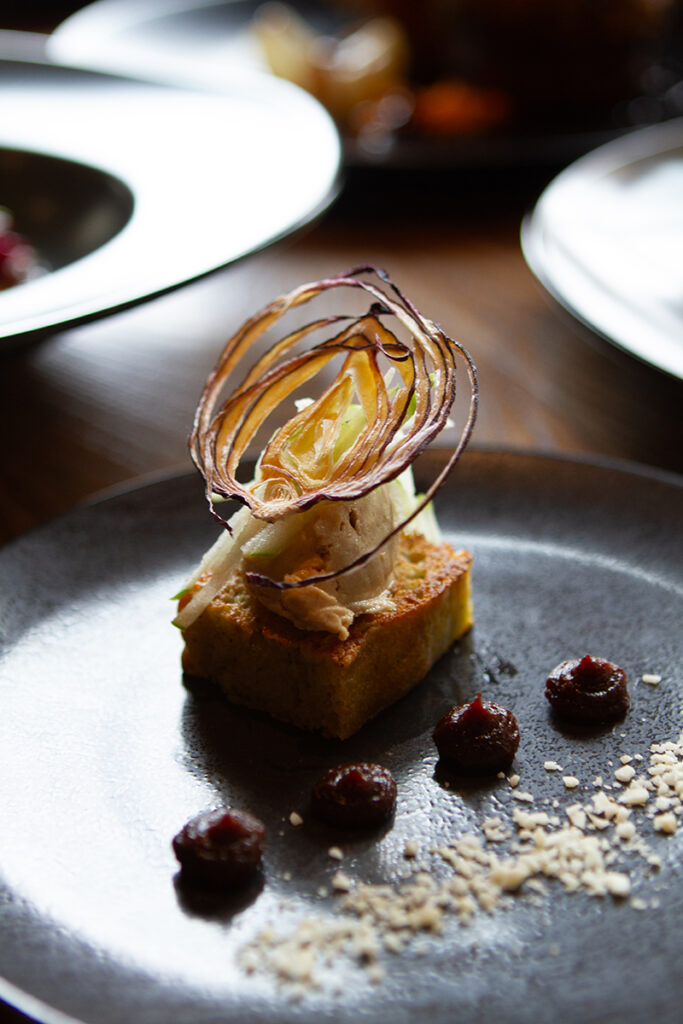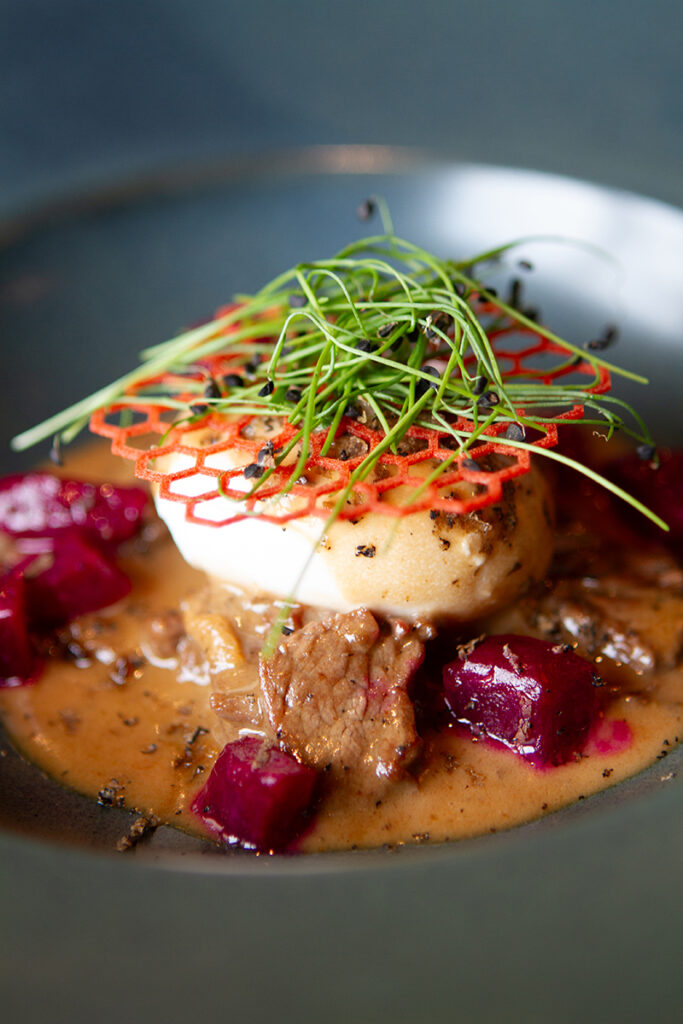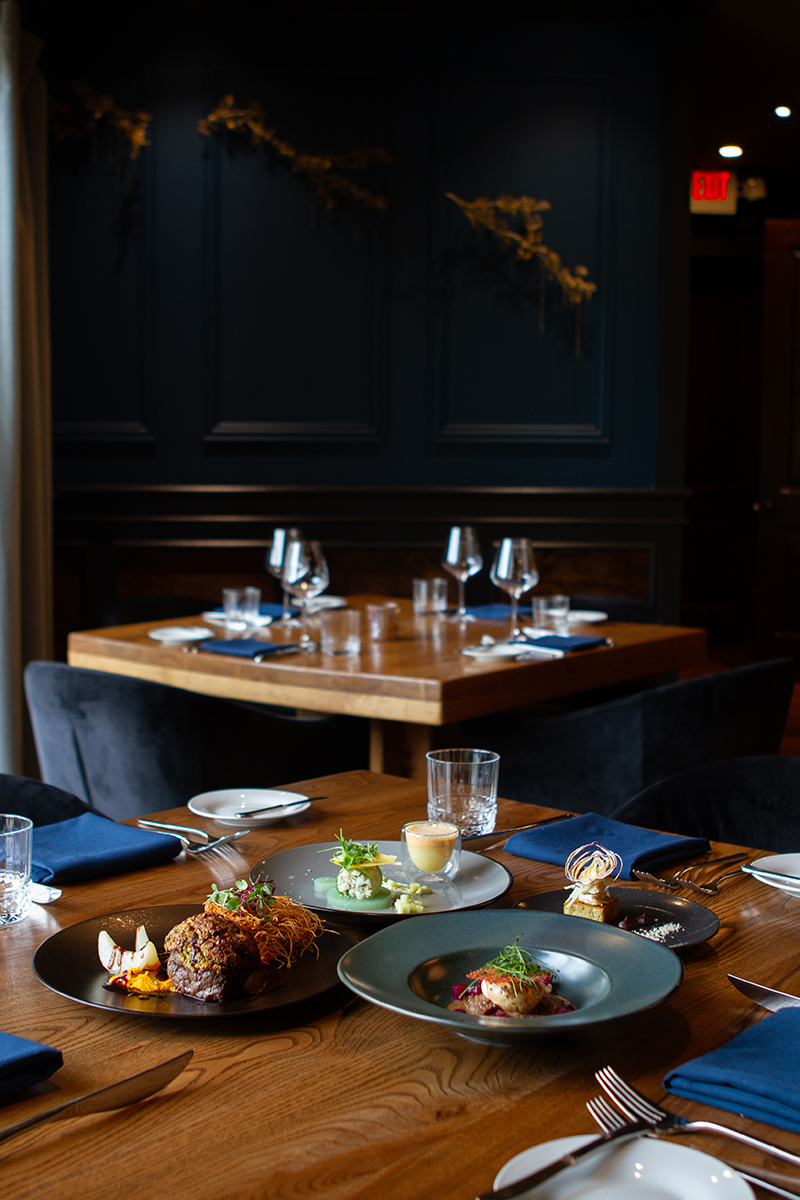Before one can become an elite chef, he or she must earn the trust of eaters. And that comes from understanding each ingredient in a recipe, even a lowly carrot.

“You have to understand how a carrot works,” said Henry Gutkin, executive chef at Sage Restaurant and Lounge in Fredericksburg. “If you don’t know the basic texture or flavor profile, it doesn’t make sense. It’s whether you’re just following the recipe or if you understand the recipe.”
Gutkin grew up in the eastern part of Germany and trained in Juist, one of the seven East Frisian islands. It’s a tourist area — no cars allowed, lots of horses, thousands of bicycles. There he learned to prepare French cuisine.
“It’s definitely what I’m using always as a base. That’s my signature,” he said. “If you learn these basics, then you can do pretty much anything. It doesn’t matter what country you work in, if you change jobs, or even move to a different continent.”
Gutkin says there’s a reason why so many chefs train using French menus and techniques. There’s an entire philosophy behind the French way of approaching cuisine.
“The simplest product — take French toast. There’s an idea why it’s French toast,” he said. “If you understand why they prepare products and items in this way, then when you have an idea you can copy and paste this to every other cuisine.”
Gutkin and his family moved to Fredericksburg four years ago. His wife’s father lives there, so he had visited often. Over the years he observed how the area was growing, what kinds of customers come and what they like to eat, and he began to grow his own ideas about how to serve international cuisine with local flair.
“The concept is to create a European-based cuisine with a fusion of Texas heritage,” he said.
Gutkin brags on the volume and quality of food he can obtain from local suppliers.
“Mikey’s Garden in Hunt, their lettuce — it’s honestly one of the best salads I’ve used in my career. Same with our mushroom supplier from Kerrville,” he said. “We’re working with a huge farm in Uvalde for most of our meat. They can tell me exactly, ‘It was growing on this range. It was processed right here.’”
Gutkin says working with regional vendors instead of a big food corporation gets more story in the meal. And that story, in turn, influences the kind of menu Gutkin can create.
“The materials we’re using mostly have a story behind them, and then I can create a story too,” he said.
It took years and a variety of kitchens for Gutkin to learn how to create his own food stories. He worked in Austria for a while, where he says 95% of the food is classic German cuisine. He worked in a private hotel serving five-course dinners every night. He also worked in a 2-star-rated Michelin restaurant in Germany. Each place helped him clarify himself and his style, and that clarity helps him present what he calls “authentic cuisine.”
“Your customer asks, ‘Can you do an Italian menu? Asian? French? German?’ But without your own touch, it’s not authentic,” he said. “I found the right way for myself to elevate these things with my personal touch, so they can say, ‘This is made from this guy! The elements, what he used, how he prepared it, how he plated it — it’s his authentic signature.’”
Gutkin started in Fredericksburg at Otto’s German Bistro, then moved to Sage three weeks before it opened. He was drawn to the challenge of creating meals within a space that can serve several parties at once — some at the bar, some in the dining area, others in one of the private spaces or in two different outdoor seating areas. Because the kitchen cannot be expanded, Gutkin immediately set it up exactly as he wanted it.
“When I walked in the first time, I started moving things, moving equipment. I had the menu in my head and thought about workflow. How you set up your kitchen is how you present everything from it,” he said. “Every day in this kitchen it’s clean, it’s organized. It’s my living space. It’s the same as what I’m feeling when I’m coming home.”
Gutkin wants the homey feeling to extend to all the restaurant’s employees so they feel a sense of responsibility for the pleasure of their patrons.
“This is how they train us in Europe: Everything has to do with responsibility. If you want to present something with passion, with quality knowledge, you have to take responsibility,” he said. “This feeling goes into your fingers. If you hate what you’re doing, you present hate.”
In 2024, Gutkin is excited about the Chef’s Table dinners at Sage, presented the third Thursday of each month. Through them he hopes to introduce Americans to the experience of savoring a meal slowly.
“For Americans, it’s hard to spend time to eat. Everything is quick. It’s to-go, it’s drive-in. No one is taking the time to eat,” he said. “It’s the total opposite of French people, Italian people, spending hours to have even a family meal at home.”


Gutkin says when a meal takes two or two-and-a-half hours, the palate experiences the food differently.
“You notice so many more things,” he said. “You don’t feel stuffed or packed. Your body has time to rest between courses. The personal feeling is totally different than if you rushed.”
These dinners allow Gutkin to get out of his box and be even more creative. For his diners, it’s all about trust.
“How do you explain — you think you don’t like a product, but I can present it in a way that you will like it. How do you build this trust so that people are open to choosing it?” he said.
At the same time, if a customer has a dietary restriction, their concern will be communicated to the kitchen and addressed in delicious ways the guest could never have imagined.
“They don’t have to be worried. They trust that we know exactly what we’re doing here,” he said.
Gutkin is also building trust with Sage’s sommelier and bartenders, helping the staff to learn from each other.
“The sommelier, he lets me taste the wine, and I tell him, ‘This palate would work with this or this,’ so he has a better idea of the combinations I’m putting in my meals, and so he has the best chance to choose the right wine,” he said. “Same with the bartenders. When they are doing some batches or infusions, they let me taste them because I can tell them, ‘It tastes for me like cherry or vanilla,’ and I can give them the tweaks with some flavor items on the menu that match to finish the drinks.”
Gutkin trusts his palate, even before he puts a bite of carrot into his mouth.
“I can feel it direct on my tongue without tasting it. I have an idea of what will be the final taste without trying it,” he said. “I am glad I can think in this way.”


